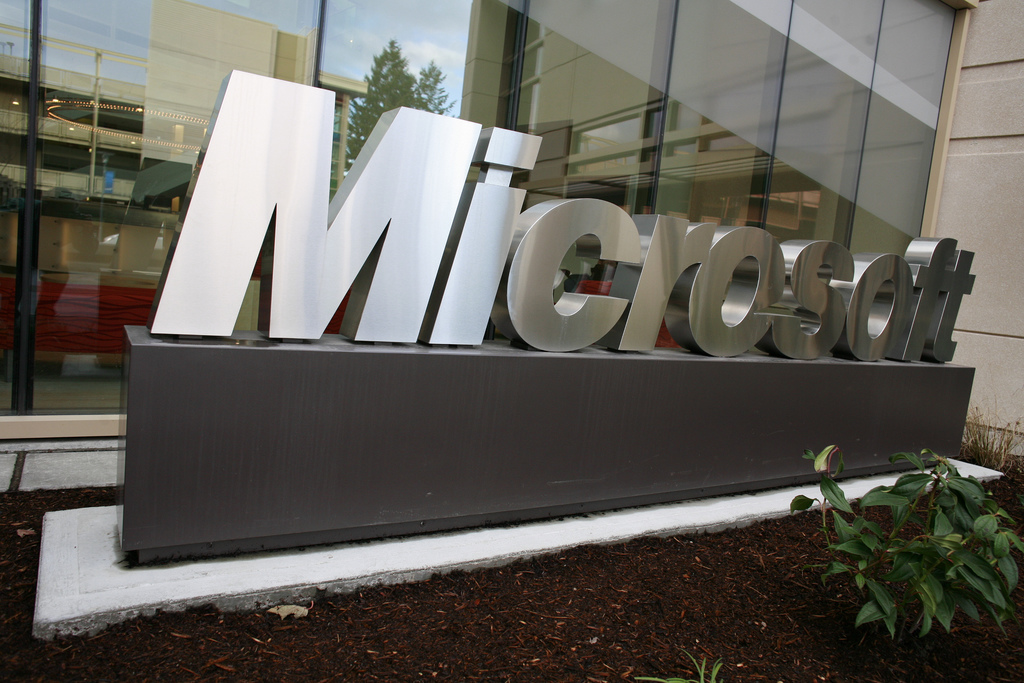 NEWS
NEWS
 NEWS
NEWS
 NEWS
NEWS
Microsoft took a big step into the world of free, open-source software yesterday when it announced it is giving away its Software for Open Networking in the Cloud (SONiC) as part of its work with the Facebook-founded Open Compute Project (OCP).
SONiC, a collection of software networking components required to build network devices like switches, is used to run a new type of network switch that is becoming more popular: software-defined networking (SDN), a technology Cisco Systems Inc. also uses with its switches. It can run on various switching platforms via the Switch Abstraction Interface (SAI) specification.
“Users have the ability to pick and chose what they want to use. They don’t have to worry about what vendor’s switch they buy,” said Kushagra Vaid, general manager for server engineering in Microsoft’s Cloud and Enterprise division. “They can take control of their own destiny and customize switches for their own environment.”
SONiC, which Microsoft uses to support Azure and Office 365, is based on a modular architecture with a lean stack built for data center networking needs, wrote Kamala Subhumaniam, principal architect of Azure networking at Microsoft, in a post on the Microsoft Azure blog.
Together with SAI, SONiC “will enable cloud operators to take advantage of hardware innovation while giving them a framework to build upon an open source code for apps on the network switch and the ability to integrate with multiple platforms,” she said.
SDN principles such as virtualization, scale-out and centralized controllers give cloud operators the scalability, reliability and speed they need to power their services, Subhumaniam said.
“All cloud operators rely on high-speed, highly available networks to power their services, which is what makes SDN so critical,” she wrote. “It’s vital that network operators be able to rapidly add networking features they need while managing any feature changes that increase risk and complexity.”
Within Microsoft, SONiC has enabled the company to debug, fix and test software bugs faster. It also provides flexibility to scale down the software and develop features that are required for its data center and its networking needs, Subhumaniam said.
SONiC can also easily extend with other open-source, third-party or proprietary software components, she said.
“SONiC brings together all the building blocks to form an open sourced, fully functional, secure and reliable cloud switch. It gives you the freedom to choose the hardware and software that is best suited to your networking needs,” Subramaniam said.
Rob Sherwood, CTO of Big Switch Networks Inc., which has been working with Microsoft on SONiC, called SONiC a good first step and said it will be interesting to see what happens in the OCP community.
What it and OCP means for companies, though, is now they can have a buy versus build discussion about their network that they never could be for, he said in an interview with Wikibon analyst Stu Miniman for theCUBE.
“Now cloud operators are deciding, ‘Do I build pieces of my network? If so, how much of this stack? Or do I continue to buy it off the shelf,” he said. “For the vast majority of people, buying your network is still the right thing. But now there are a lot more options. Now, if you have a really big company and you’re willing to invest the resources and you can see the return on investment, it’s possible to build your own networking stack. It’s much more like the server world. “
To help companies adopt SONiC, Microsoft has partnered with the following companies:
SONiC, which is based on Linux, is a continuation of Microsoft’s move into the open-space world. Vaid said the company’s decision to join the OCP last year was so it could learn from their experiences in the public cloud and apply that to the enterprise (Windows and Azure Stack)—to provide consistency between the two.
The company’s participation in the open-source networking space came about because of the faster innovations that can result, he said.
“Networking is evolving at a rapid pace, and we want the ability to change the network stack based on what customers want. By being part of the OCP, we can work with the community and drive innovation faster,” he said.
In addition to SONiC, Microsoft last year built Azure Cloud Switch (ACS), which it described as “a cross-platform modular operating system for data center networking built on Linux” and was the start of it building its own software for running network devices such as switches.
In 2015, the company also added support for Linux on Azure cloud, added Linux monitoring to Azure and built a data center network operating system based on Linux.
And earlier this week, the company announced it is bringing its database server, SQL Server, to Linux.
Support our mission to keep content open and free by engaging with theCUBE community. Join theCUBE’s Alumni Trust Network, where technology leaders connect, share intelligence and create opportunities.
Founded by tech visionaries John Furrier and Dave Vellante, SiliconANGLE Media has built a dynamic ecosystem of industry-leading digital media brands that reach 15+ million elite tech professionals. Our new proprietary theCUBE AI Video Cloud is breaking ground in audience interaction, leveraging theCUBEai.com neural network to help technology companies make data-driven decisions and stay at the forefront of industry conversations.